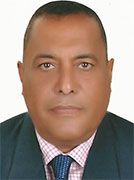


More than 36 years of research experience in both laboratory and field in the area of fish nutrition-and culture interactions, wastewater reclamation under the guidance of Prof. Y. A. Prvezencev, Department of Zoology, University of Temriazev Moscow, Russia from November, 1988 till to day. Fields of my experiences are under guidance of Prof. Conrad Dabrowski Department of Natural resources, Ohio University, USA. Links to further information on specialist area or projects National Institute of Oceanography and Fisheries, University of Temriazev Moscow, Russia
Speech Title: Production of Freshwater Fish with Unconventional Ingredients
Abstract
The problem:
The most important raw materials used in the fish feed industry are fishmeal, fish oil and corn meal which preferred as a protein and energy source due to its high protein and energy content, good amino acid balance, lack of ant nutrients and high palatability. However, because of its high cost and limited resources, its substitution is a basic prerequisite for the sustainability of aquaculture. The number of feedstuffs with high protein content that can currently be used to replace fish meal is very important for Aquaculture.
Formulating Feeds
Nutritionally complete feeds should be used whenever natural foods are absent or where natural foods only make a small contribution to nutrition. When substantial amounts of natural productivity are no available, supplemental feeds need to contain all essential nutrients. We will focus on nutritionally-complete feeds.
The most important Freshwater Fish Species in Egypt.
1) Nile tilapia (Oreochromis niloticus)

2) Blue tilapia (Oreochromis aureus)
3) Common carp (Cprinus carpio)
A-production fingerling from tilapia using soybean meal
B-production Nile tilapia for Marketing using cotton seed meal
C-production Nile tilapia for Marketing using sunflower meal
D-production Nile tilapia for Marketing using linseed meal